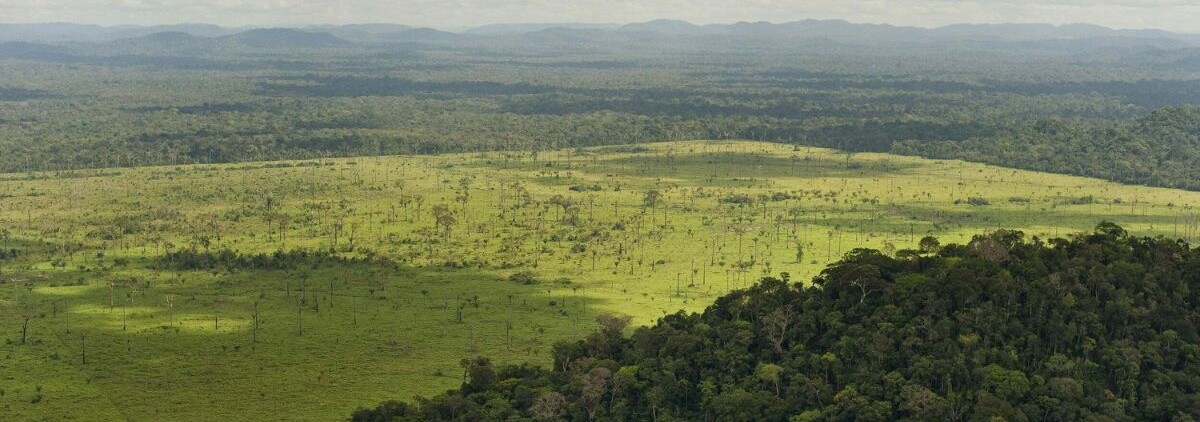
Aligning Financial Flows to Halt and Reverse Forest Loss: A how to for Client Facing Teams
Cattle, soy, and palm oil are keystone commodities that underpin entire economies, support millions of rural livelihoods, and permeate global food systems. Finance is the oxygen of commodities and the financial institutions who provide the capital to commodity companies have the power to change the trajectory of deforestation and conversion rates.
This resource glossary provides materials from a live workshop to provide essential training to help the financial sector understand commodity supply chains, manage risk, and achieve growth through empowered client-facing teams.
Engaging Midstream Companies on Deforestation-Free Agriculture: A Framework for Investors and Lenders
This document provides a structured framework of critical questions that investors and lenders can use to assess midstream commodity companies—particularly in cattle, soy, and palm oil—on their commitments, implementation plans, and disclosures related to deforestation-free and sustainable agriculture. It offers actionable guidance across key areas such as traceability, incentive alignment, financial innovation, and policy engagement, helping financial institutions identify credible transition strategies while managing climate, nature, and reputational risk. For those in finance, it is an essential tool to evaluate portfolio resilience and support value chain-wide progress on sustainability.
>> Links to download English, Portuguese or Mandarin versions.
Finance Sector Strategies for Deforestation-Free Commodity Supply Chains
This comprehensive guide outlines the strategic case for deforestation- and conversion-free finance, emphasizing the role of financial institutions in driving sustainable agriculture across keystone commodities like cattle, soy, and palm oil. It presents actionable frameworks, disclosure tools, regulatory updates (including EUDR and CSRD), and best practices for monitoring, traceability, and supplier engagement. The resource is especially valuable for banks and investors aiming to align portfolios with climate, biodiversity, and net-zero objectives while mitigating systemic risks linked to commodity supply chains.
>> Links to download English, Portuguese or Mandarin versions.
Navigating Commodity Supply Chains
Detailed Sector Briefings on Cattle, Soy & Palm Oil for Sustainable Investment

Cattle on farmlands, São Felix do Xingu, Pará state, Brazil. Photo Credit: © TNC/Maíra Erlich
Brazilian Cattle Supply Chain: Toward Deforestation-Free Finance
This overview explores the Brazilian cattle supply chain—one of the world’s largest and most complex—highlighting its role in deforestation and the push for sustainable agriculture. It covers key drivers of land conversion, traceability gaps (especially among indirect suppliers), and emerging solutions like Terms of Adjusted Conduct (TAC) agreements, the Indirect Supplier Working Group (GTFI), and private monitoring platforms. The document is essential for anyone focused on keystone commodities and deforestation-free finance.
>>A video recording of the presentation is also available. Links to download English, Portuguese or Mandarin versions.
Soy Supply Chain: Global Growth, Risk Exposure, and Traceability Gaps
This briefing explores the soy supply chain from production hotspots like Brazil and Argentina to global markets driven by demand for animal feed, biofuels, and consumer products. It details major deforestation pressures in the Amazon, Cerrado, and Gran Chaco regions, outlines demand drivers like urbanization and GDP growth, and highlights persistent gaps in traceability—especially for indirect suppliers. With soy markets projected to nearly double in value by 2034, the document offers strategic insights into deforestation-free finance and risk management for capital allocators and ESG-focused investors.
>> Links to download English, Portuguese or Mandarin versions.
Palm Oil Supply Chain: Mapping Progress Toward Sustainable Agriculture
This resource offers a concise look at the global palm oil supply chain—one of the most land-efficient but environmentally complex keystone commodities. It examines traceability challenges from large plantations to independent smallholders, outlines current certification and monitoring tools, and reviews how companies are reporting on deforestation-free (DCF) compliance. With 80% of traded volumes linked to No Deforestation, Peat, or Exploitation (NDPE) policies, the palm oil sector is advancing—but alignment, transparency, and finance-sector support remain critical.
>> Links to download English, Portuguese or Mandarin versions.
Stakeholder Influence in the Shift to Sustainable Commodity Supply Chains

Soybean plantation in Paragominas, PA. July 2011. Photo Credit: © TNC/Rafael Araújo
This resource outlines the critical roles that various stakeholders—from producers and traders to insurers, banks, and asset managers—play in transforming global food systems toward deforestation- and conversion-free production. It highlights leverage points across the soy supply chain, the importance of coordinated investor action, and the role of innovative finance and public policy in scaling sustainable agriculture. For financial institutions, it provides a clear roadmap to embed nature-positive outcomes into investment strategies while managing systemic risk and supporting resilient economic growth.

